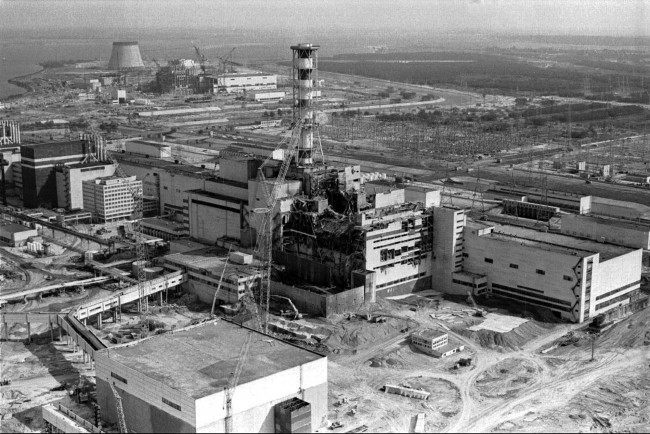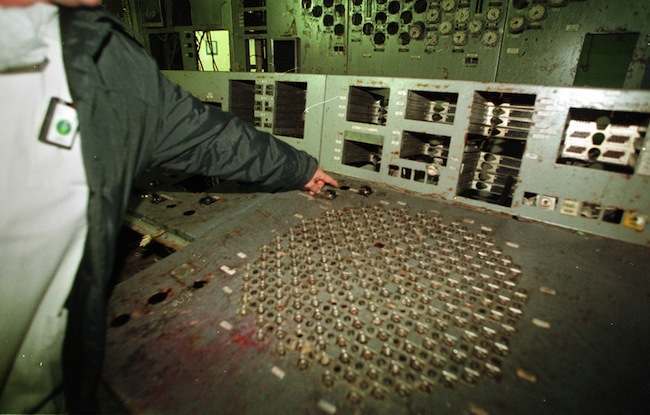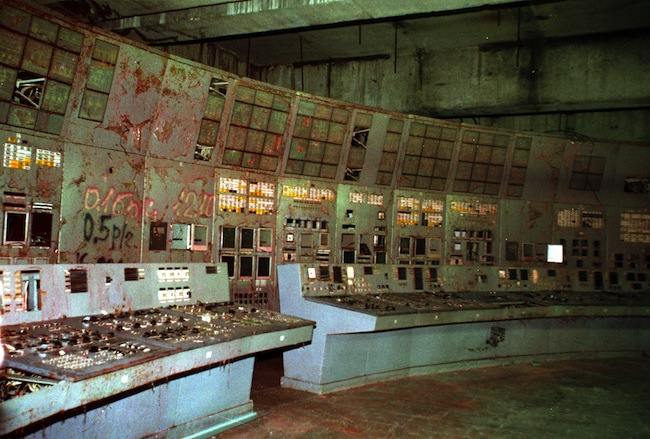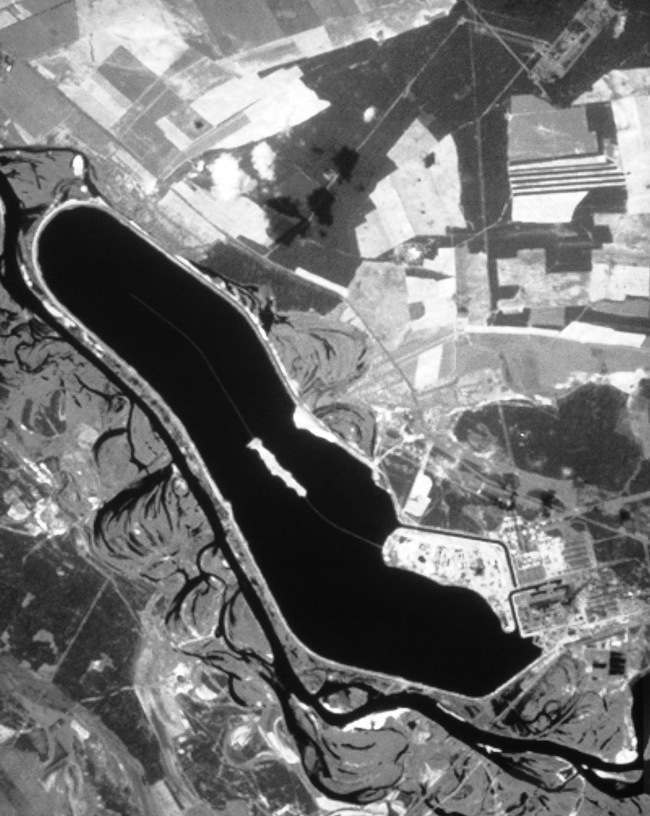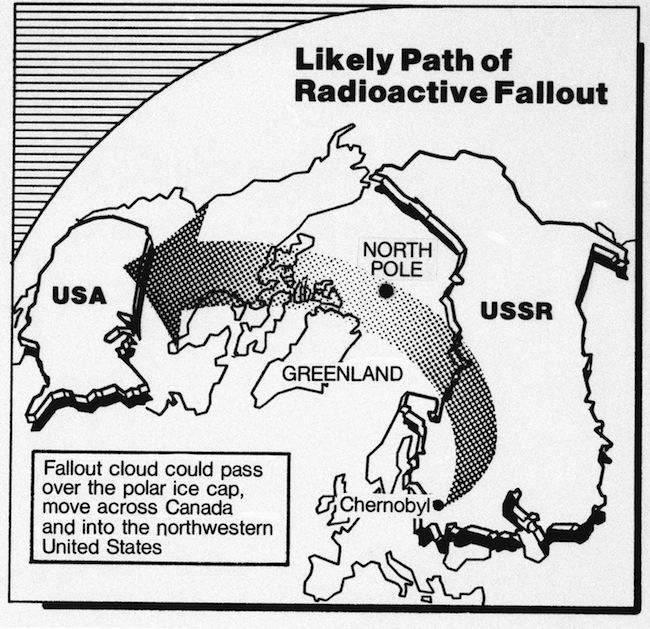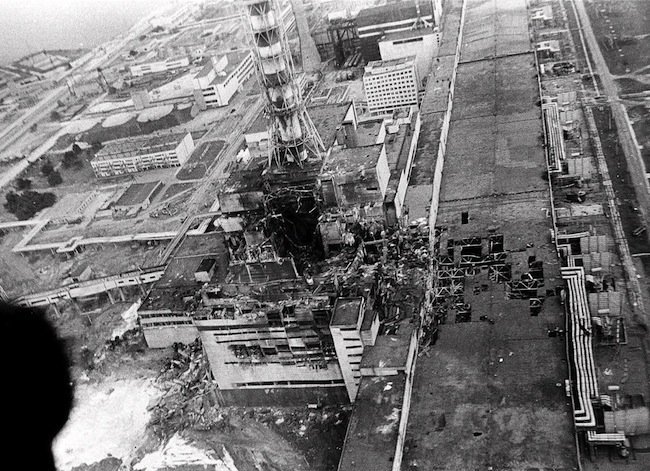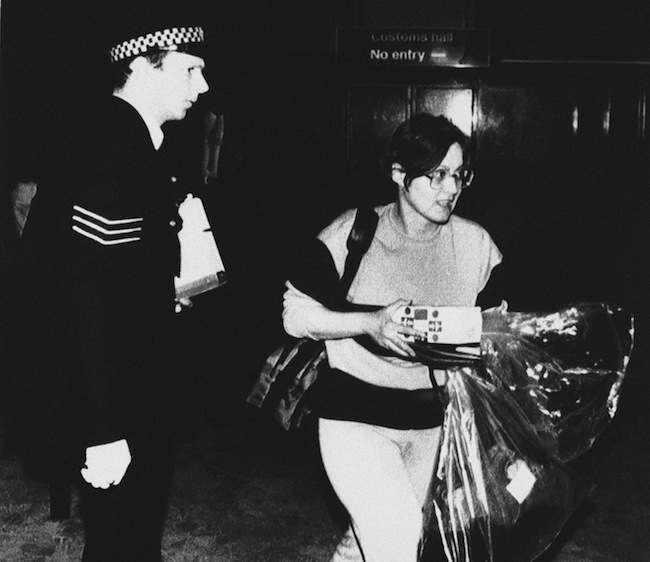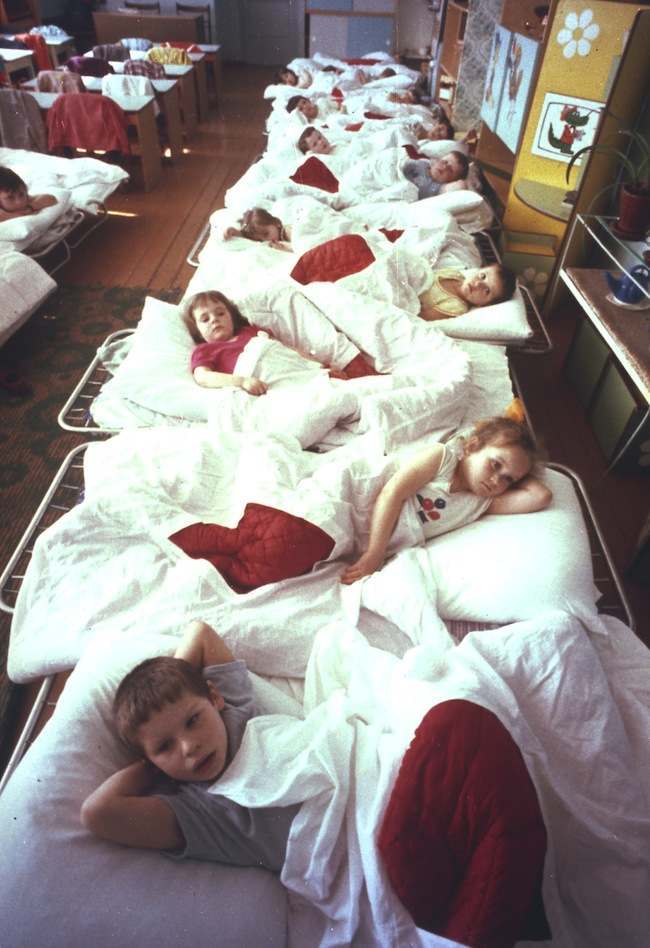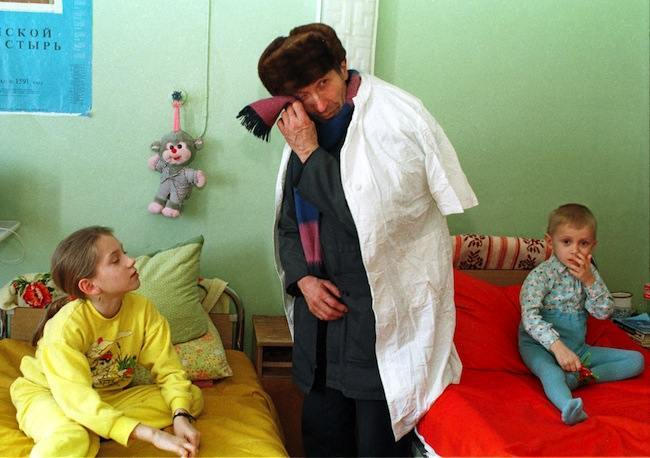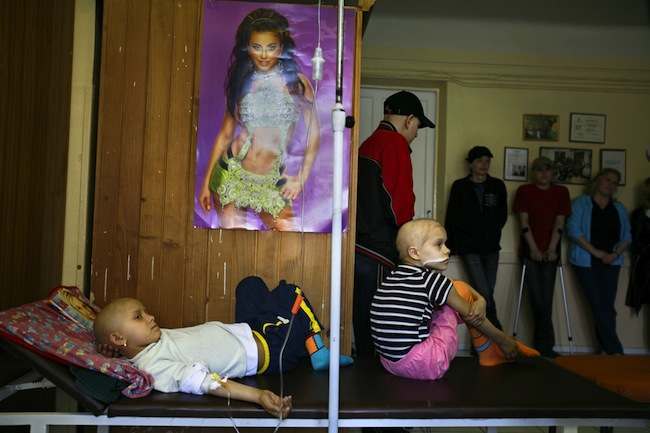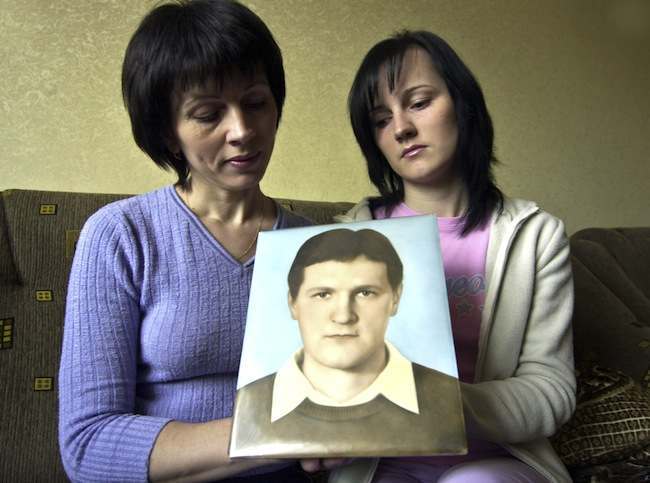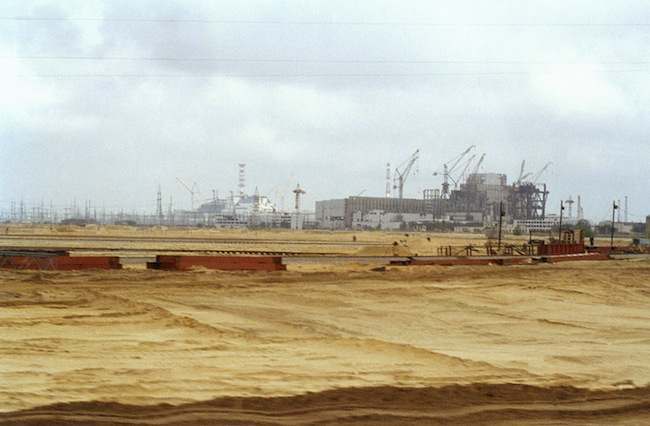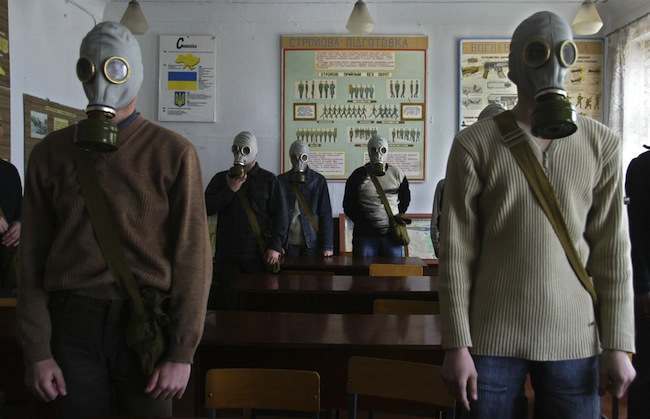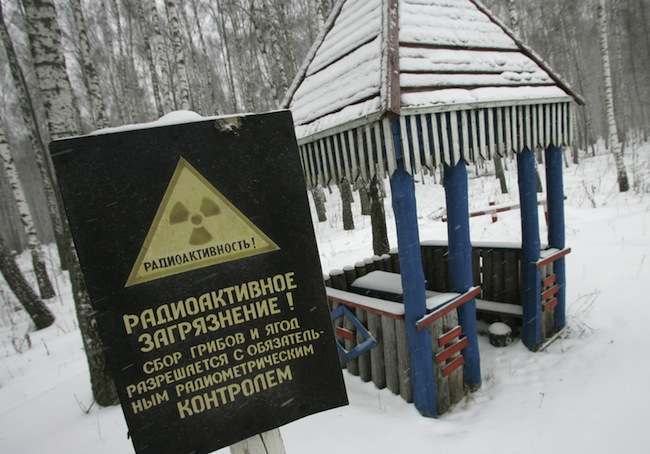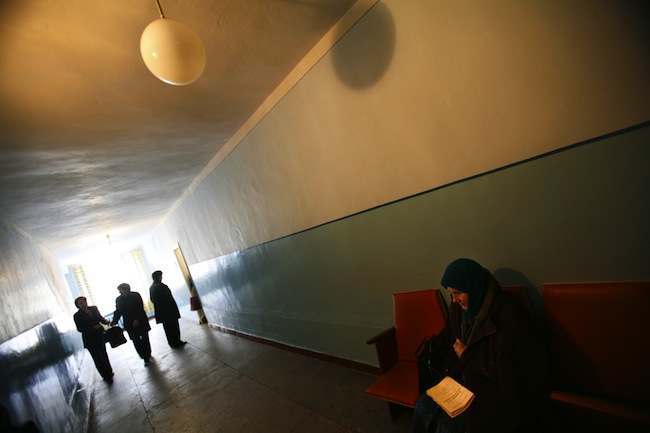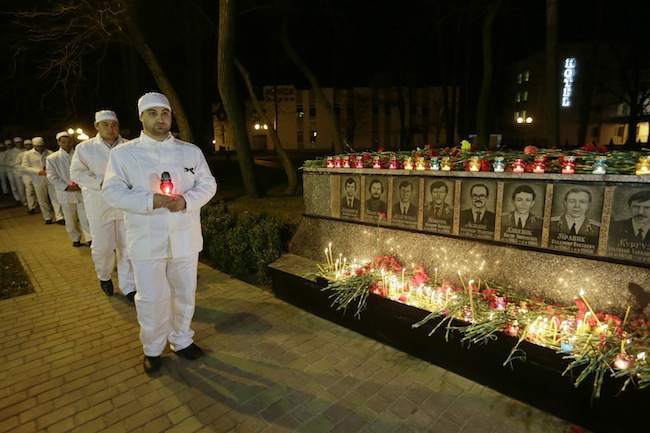Posts Tagged ‘Chernobyl’
Explore The Weird Ruins of Chernobyl Through the Eyes of a Drone (Video)
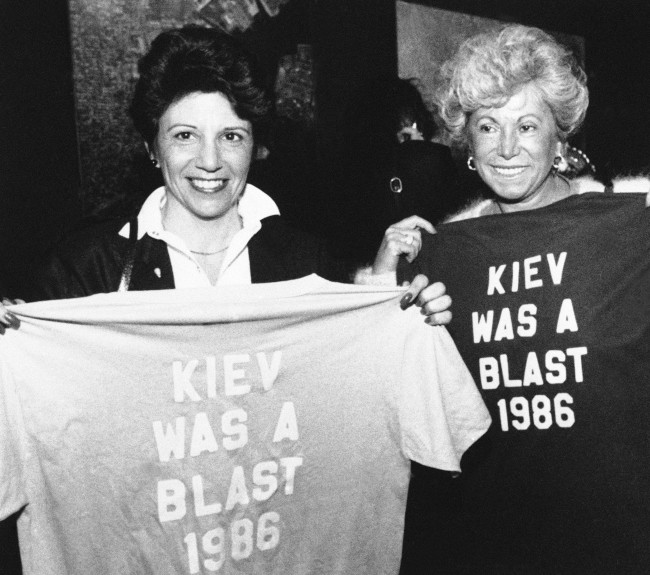
Marina Pappas, left, and Chrisa Livanos, both mothers of students who returned from Kiev, hold up T-shirts reading “Kiev Was A Blast 1986” at Kennedy International Airport in New York, May 3, 1986. Twenty high school students and 11 adults from Long Island, who came within 80 miles of the Soviet nuclear accident, returned home three days early. (AP Photo/Susan Ragan)
The drone flew over Pripyat, the abandoned Ukrainian city once home to the Chernobyl Nuclear Power Plant (where the weird sponges grow).
Danny Cooke’s Postcards from Pripyat, shows us the wasteland inside the scar.
More here.
Spotter: Popular Mechanics
Posted: 29th, November 2014 | In: Strange But True | Comment
Living Radiation-Sponge Grows In Chernobyl
THERE is life inside the old Chernobyl nuclear reactor. Growing life. A robot sent within the radioactive energy tomb discovered a smear of goo on one of the walls.
A samples was taken. Further probes. Further investigations. The thing was feasting off the gamma radiation. Gamma radiation 500 times the normal background radiation levels. It sounds terrifying. But, then, what if nature is eating the radiation? Could this fungus clean up radioactive sites?
Read the rest of this entry »
Posted: 29th, November 2013 | In: Technology | Comment
Chernobyl: the word’s worst nuclear accident in photos – then and now
AT 1:23 a.m. on April 26, 1986, an engineer flicked the power switch on the control panel in the Chernobyl plant 4th reactor’s control room and triggered the world’s nuclear accident. The above picture show the missing power switch which was stolen by souvenir-hunters.
The old control room, with its damaged machinery, inside Reactor No. 4 in the Chernobyl nuclear power plant is seen in this Nov. 10, 2000 file photo. Geiger counter registered about 80,000 microroentgens an hour _ 16,000 times the safe limit.
Satellite view of the Chernobyl nuclear power plant in USSR, as made by U.S. Geographic Survey EROS satellite, April 29, 1986, a day after a violent nuclear explosion at the plant.
Experts said that a radioactive cloud from the Soviet nuclear accident at the Chernobyl reactor in the Ukraine would probably pass over the polar ice cap, move across Canada and into the northwestern United States shown April 29, 1986. However, the experts say the amounts of fall-out would be so small they would not present a health hazard.
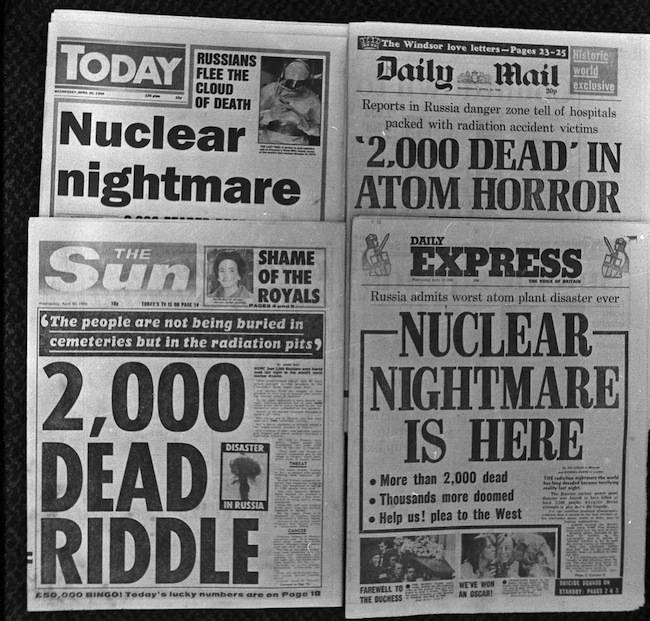 The British tabloids reported.
The British tabloids reported.
An aerial view of the Chernobyl nucler power plant.
An unidentified student one of a party of students who returned to London from Kiev passes through the arrival lounge at London?s Heathrow Airport, Thursday, May 2, 1986 carrying some possessions in plastic bags. The students from Kiev near the site of the Chernobyl nuclear power plant accident were screened by the National Radiological Protection Board and were reported to be in no danger whatsoever.
On April 21, 1990, young children on a collective farm are patients on a ward in Syekovo, a village not far from the Chernobyl nuclear plant. Four years after the April 26, 1986 Chernobyl accident, these children were suffering intestinal problems from exposure to radiation. A Soviet newspaper has said scientists still expect thousands of deaths from radiation released in the Chernobyl explosion and fire
The 20-mile exclusion zone around the plant is now overgrown and Pripyat, where the plant workers used to live, is a ghost town.
Children’s toys and gas masks, covered by the radioactive dust are seen on bed frameworks in an abandoned kindergarten in the ghost town of Pripyat on March 10, 2006, in Ukraine. Pripyat was built nearly a mile from the plant to house the Chernobyl nuclear power plant’s workers.
Immediately after the two explosions in Chernobyl, while firefighters were still trying to come to grips with the enormity of the meltdown, the people of Pripyat went about their normal business. Then they started suffering powerful headaches and vomiting. When they were eventually resettled they left behind their kitchenware, their children’s toys, food in cupboards.Now, with its abandoned funfair and nursery school untouched for more than two decades, the town resembles a modern-day Pompeii.
Ivan Kalenda turns away to wipe his tears as he visits his three-year-old grandson Vitya, right, in the children’s cancer ward at a hospital in Gomel, 300 kms, 186 miles southwest of Minsk, Belarus, March 19, 1996.
Ukrainian children suffering from cancer, listen to music at the children’s hospital in Kiev Tuesday, April 18, 2006. Greenpeace said Tuesday in a new report that more than 90,000 people were likely to die of cancers caused by radiation from the Chernobyl nuclear disaster, countering a United Nations report that predicted the death toll would be around 4,000.
Natalya Lopatyuk, 41, left, and her daughter Yulia, 19, hold a portrait of Natalya’s husband and Yulia’s father Viktor in Kiev, Ukraine, Saturday, April 15, 2006. Viktor Lopatyuk, an electrician at the station died from acute radiation poisoning 22 days after the explosion at Chernobyl nuclear power plant.
Reactor No. 4 of the Chernobyl nuclear power plant stands encased in lead and concrete following the accident.
The sarcophagus encasing Chernobyl was built in haste and is crumbling. Despite strengthening work there are fears it could collapse, leading to the release of tonnes of radioactive dust. Work is due to begin on a £600m replacement shelter designed to last 100 years. This New Safe Confinement will be built on site and then slid over the sarcophagus.
School children wear gasmasks during nuclear safety training lessong in Rudo near an isolated zone around Ukraine’s Chernobyl nuclear power plant, Monday, April 3, 2006. About 600,000 people were mobilized to fight the effects of the explosion, and more than 116,000 evacuated from their homes. The ex-Soviet republics of Ukraine, Belarus and Russia are stilling coping with the aftermath of the accident today, from skyrocketing rates of thyroid cancer to a marked increase in health concerns among the 5 million people whose land was dusted with radioactive particles.
A warning sign installed in a forest in Gomel region, Belarus, Saturday, Feb. 18, 2006. The warning reads “Radiation contamination! Mushroom and berries gathered must be subjected to radiation checks.”
Lasting legacy of Chernobyl for dozens of British farms is the restrictions placed on the movement of their sheep and lambs from within the affected areas which are still in place today 10 years after the disaster. Farms like those of John Harrison at Ulpha in the Lake District.
A woman who fears she has thyroid cancer is waiting to have her throat checked in a hospital in Ivankov town at Ukraine’s contaminated zone Friday, April 7,2006.
Ukrainians dressed in the uniform of the Chernobyl nuclear station workers light candles to commemorate those who died after the Chernobyl nuclear disaster, during a ceremony at the memorial to Chernobyl firefighters in the city of Slavutich, Ukraine, Friday, April 26, 2013.
Japan’s Media Apocalypse: Susie Boniface Goes Large On Chernobyl
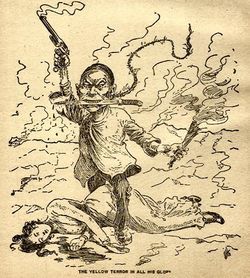 JAPAN’S Media Apocalypse: As told buy the Mirror’s Susie Boniface. From her desk, Boniface senses terrible danger and great loss of life in Japan:
JAPAN’S Media Apocalypse: As told buy the Mirror’s Susie Boniface. From her desk, Boniface senses terrible danger and great loss of life in Japan:
One expert predicted that the death toll in the years ahead could top the 500,000 attributed to the Chernobyl accident of 1986 and warned that panicked repair attempts could lead to an even greater disaster.
Read the rest of this entry »
Fukushima Is Only Another Chernobyl For Lazy Journalists
 TWO things have intervened in the media coverage of the Japanese nuclear plant crisis to make it misleading to the point of incomprehensible, writes Richard North.
TWO things have intervened in the media coverage of the Japanese nuclear plant crisis to make it misleading to the point of incomprehensible, writes Richard North.
The one is the frequent use of the Chernobyl disaster as a comparator, where there are absolutely no comparisons with the incident at Fukushima. The second is the childish refrain of “meltdown” by scientifically and technically illiterate journalists, who seem to be incapable of understanding what is happening, yet seem determined to spread their own incomprehension far and wide.
Read the rest of this entry »
Posted: 18th, March 2011 | In: Reviews | Comment (1)

